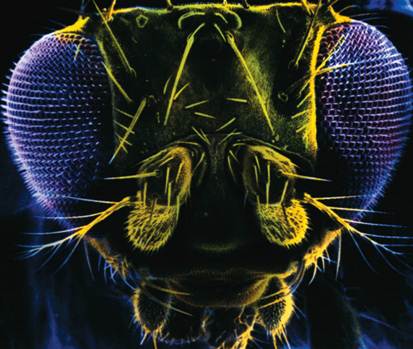


 النبات
النبات
 الحيوان
الحيوان
 الأحياء المجهرية
الأحياء المجهرية
 علم الأمراض
علم الأمراض
 التقانة الإحيائية
التقانة الإحيائية
 التقنية الحيوية المكروبية
التقنية الحيوية المكروبية
 التقنية الحياتية النانوية
التقنية الحياتية النانوية
 علم الأجنة
علم الأجنة
 الأحياء الجزيئي
الأحياء الجزيئي
 علم وظائف الأعضاء
علم وظائف الأعضاء
 الغدد
الغدد
 المضادات الحيوية
المضادات الحيوية|
Read More
Date: 20-10-2015
Date: 28-10-2015
Date: 27-10-2015
|
Model Organisms: Cell Biology and Genetics
Model organisms are used to study basic mechanisms common to many forms of life and to experiment with biological processes that may be difficult or unethical to study in humans. Model organisms are usually chosen for some combination of ease of study (for example, the transparent bodies of the nematode Caenorhabditis elegans or the zebra fish Brachydanio rerio), ability to grow and reproduce quickly in a small space(Arabidopsis thaliana, a four-inch plant with a life cycle of four to six weeks), prominent cell structure of interest (the giant chromosomes of the fruit fly Drosophila melanogaster), or ability to closely model some aspect of human biology (the mammalian genome and complex brain of the mouse). Most model organisms combine many if not all of these characteristics.

Scanning electron micrograph of the head of a fruit fly (Drosophila melanogaster).
Escherichia coli bacteria provide an especially important model for studies of gene regulation. Yeast (Saccharomyces cerevisiae) are used for a wide variety of studies in eukaryotic chromosome structure and gene regulation, as well as virtually every aspect of cell function, including the control of the cell cycle and signal transduction. The slime mold Dictyostelium discoideum is used to study cell motility and other aspects of cell function, especially those with applications to cancer. C. elegans has provided a window on the fate of individual cells during development, as each cell can be followed as it is formed, takes its place, and begins to function. Drosophila is central in the study of chromosomes and molecular aspects of development, especially development of the nervous system. Zebrafish and the frog Xenopus laevis are used most often to study vertebrate development. Arabidopsis is the major model of plant cell biology and genetics. Finally, cultures of human cells are often used to examine response to drugs, effects of genetic mutations, and other aspects of health and disease.
The genomes of each of these organisms are either fully sequenced or soon will be, allowing further investigation of the links between gene expression and cell function. This will make these models even more valuable, and also allow investigation of fundamental questions about the similarities and differences among all types of organisms.
References
The WWW Virtual Library: Model Organisms. <http://ceolas.org/VL/mo/>.



|
|
|
|
لشعر لامع وكثيف وصحي.. وصفة تكشف "سرا آسيويا" قديما
|
|
|
|
|
|
|
كيفية الحفاظ على فرامل السيارة لضمان الأمان المثالي
|
|
|
|
|
|
|
شعبة مدارس الكفيل: مخيَّم بنات العقيدة يعزِّز القيم الدينية وينمِّي مهارات اتخاذ القرار لدى المتطوِّعات
|
|
|